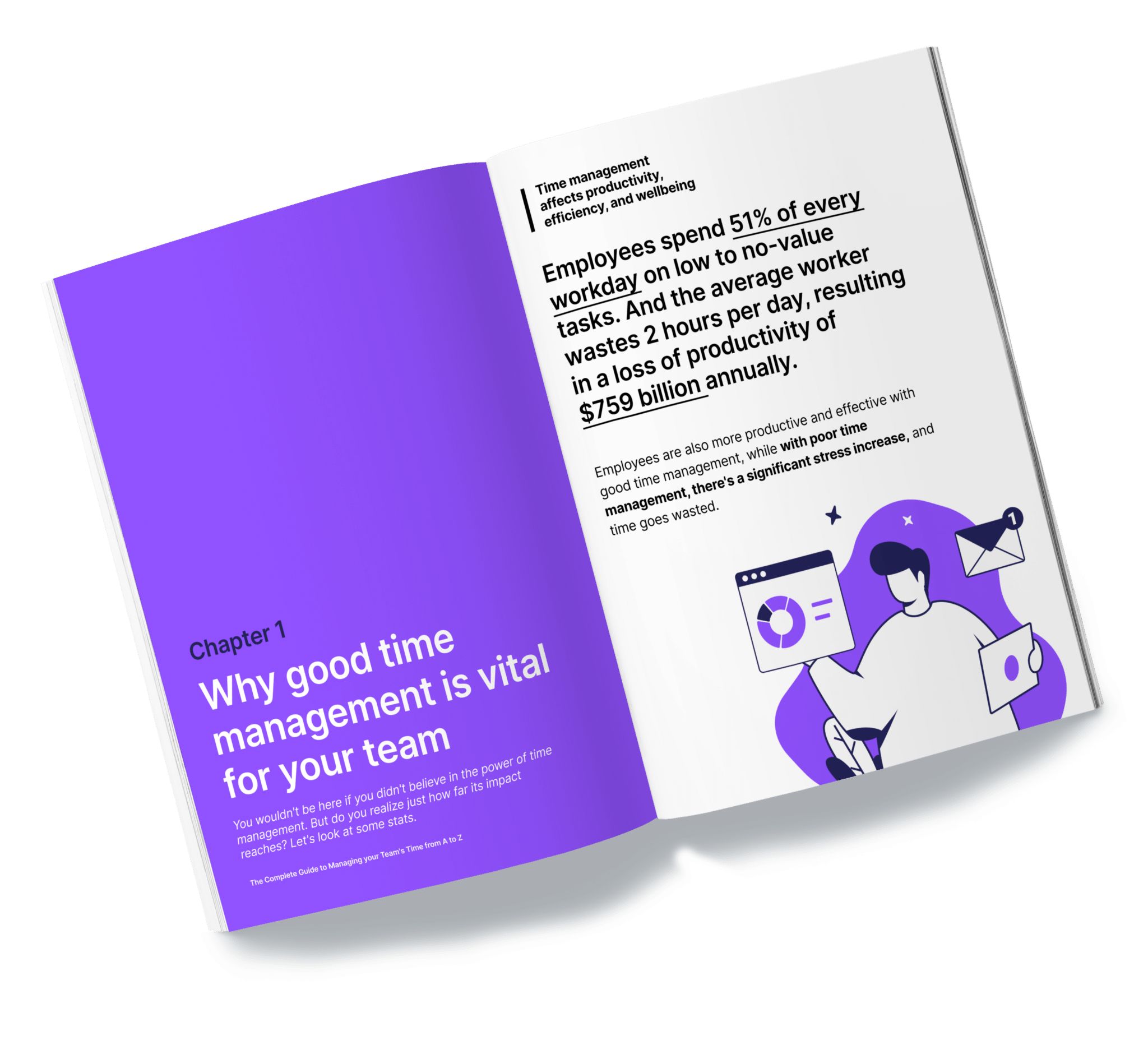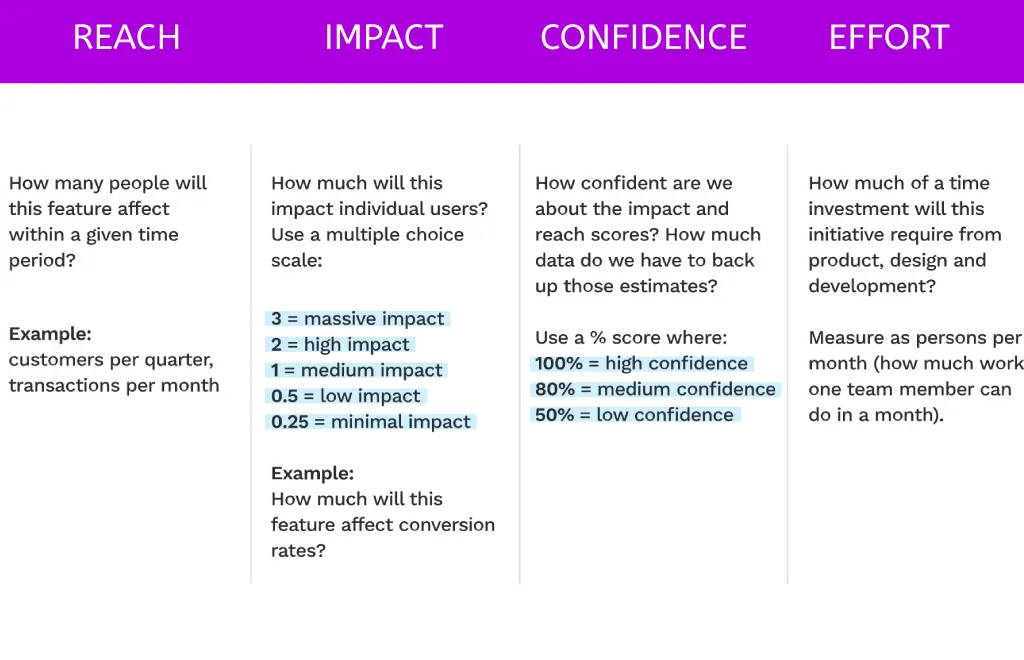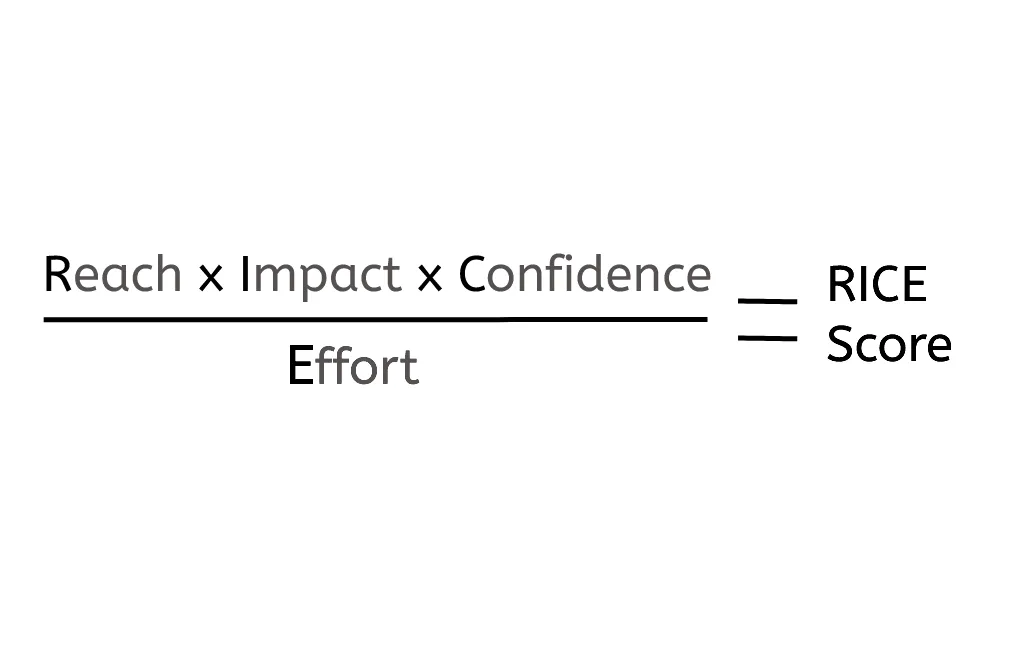Wyjaśnienie metody ustalania priorytetów RICE
Prioritizing is one of the most significant and far-reaching challenges of professionals around the world. Almost everyone in every job experiences moments when prioritization is needed, favoring a pragmatic and rational approach.

Darmowy eBook: Kompletny przewodnik po zarządzaniu czasem zespołu
Learn the best Team Time Management techniques and learn how to leverage the power of time tracking!
When building a roadmap, all project managers — or at least the ones who know what they need to do to build winning projects — have to, at some point, take the time to prioritize. However, this is not an easy task, and often managers rely on instincts, gut feelings, and even external pressures to make decisions.
This article presents a prioritization framework that uses a scoring system, allowing you to analyze several factors regarding each task.
Learn about the RICE prioritization method and start making your life easier — prioritization will no longer be a headache!
What is the RICE prioritization method?
RICE stands for Reach, Impact, Confidence, and Effort.
This relatively simple prioritization framework was born out of necessity by Sean McBride, at the time working as a project manager at Intercom. With so many different prioritization frameworks available, McBride and his colleagues needed to find one that fit their context. Since they couldn’t find one, they invented it.
What was missing was a framework that would help them compare the potential of different tasks, features, or ideas on the impact of conversions. Since it wasn’t easy to compare “apples and pears”, they came up with a way to do it.
By determining the RICE score of each task, project managers or team leaders can easily determine when to do each task, basing the decision on a mathematical formula and not on guesswork.
This way, the process is standardized, unlike other frameworks that lack rigor and consistency.
Let’s dive into the formula and explain how the RICE prioritization technique works.
Learn how to prioritize your tasks effectively.

How to use the Rice Prioritization method?
As we previously explained, the RICE score helps you quantify the estimated value of tasks, making it easier to sort when it’s time to decide the order they should be worked on. As so, you must apply this simple mathematical formula:
Sounds easy, right? Yes, but you’re probably still wondering how to determine the values of Reach, Impact, Confidence, and Effort. That’s exactly what we’re going to clarify next.
1. Calculating Reach
In simple terms, Reach is measured in the number of people/events per time period.
So, when calculating it, you should answer the question: how many people will this project affect in a given time period? This time period can be a month, a quarter, or even a year. Obviously, you should use real measurements as much as possible to keep it accurate.
Let’s take an example: your research shows that having a particular feature in your project will reach 1000 potential customers in a month, and 20% will convert. So, the reach of that action will be 1000 × 20% = 200.
2. Calculating Impact
The point of calculating impact is to focus on tasks that will actually make a difference. For different businesses and, consequently different projects, this can translate into different questions.
Broadly speaking, though, the impact is directly proportional to the increase in conversion rate — whatever conversion is for your context.
Thus, McBride determined that impact should be chosen from a multiple-choice scale:
- 3 for massive impact;
- 2 for high impact;
- 1 for medium impact;
- 0.5 for low impact;
- 0.25 for minimal impact.
Estimating the impact of a project or idea may seem quite relative, but it will always be better than the alternative — pure guessing.
3. Calculating Confidence
Confidence is the level of certainty you have about your estimates. Do you have data to support all your estimates? If not, you can ensure you don’t give too high RICE scores to your tasks by using confidence.
The confidence score is calculated using multiple choices of percentages:
- 100% confidence (High): you have quantitative metrics and research that helped you define Reach, Impact, and Effort;
- 80% Confidence (Medium): you have data that supports two of the criteria, for example, Reach and Effort, but no great certainty about Impact;
- 50% Confidence (Low): you’re not so sure about any of the criteria. Reach and Impact may be lower than estimated, Effort higher… who knows?;
- Below 50%: anything below 50% confidence is a total long shot.
4. Calculating Effort
Finally, you need to calculate Effort. This is the only criterion of the RICE prioritization method that is “negative”. That is, having a high number is actually bad. Let us now explain.
The effort is calculated in “person-months”, that is, the work that a person can do in a month. Imagine that a given task takes 1 month of design work and 1 month of engineering work: this gives an Effort score of 2 person-months.

5. Calculating the final RICE score
Now that we know how to calculate Reach, Impact, Confidence, and Effort, it’s time to do the final math using the formula we showed you above.
The resulting score measures “total impact per time worked” — exactly what we need to know! Then sort the tasks from highest to lowest and start tackling them!

Benefits of using the RICE prioritization method
The RICE prioritization method has multiple advantages, and not only for those in management positions. Firstly, having prioritization skills is important for any professional — after all, any one of us can be a leader tomorrow.
On the other hand, it can also be applied to personal life. You can use this method to prioritize personal goals — should I buy a house or a car? — or even to organize your finances — should I spend this money on new shoes or a new desk for work?
For team leaders or project managers, there are several benefits to highlight. Here are a few:
Focusing on one goal
The RICE method helps you decide which goal has the most impact on the time available.
As such, it can be as useful for resource-intensive teams as it can be for resource-poor teams that can’t afford to work on multiple goals.
Team participation in decision making
Nothing motivates a team like involving them in decision-making.
Who better to evaluate reach, impact, confidence, and effort than those who will be working on the tasks? Allowing team members to choose which projects to tackle first will make them feel more motivated and connected to their work.
Promoting alignment
Sometimes it can be tricky to explain to stakeholders why you decide to prioritize one project over another.
Using the RICE prioritization technique, stakeholders know the factors that went into making project decisions.
Shows the bigger picture
This method takes into consideration several different factors, which helps project managers to have a clearer idea of the bigger picture.
The score is based on data, not emotion or gut feelings.
Tips to effectively use the RICE prioritization method
A prioritization framework like RICE helps you make informed decisions about what you should work on first and defend those decisions. However, using this method is not always straightforward, so here are some tips for using this technique effectively:
- Focus on a single goal. Commit to the goal you have chosen based on the RICE score and do not fall into the temptation of trying to focus on several micro objectives;
- Give your team autonomy. If you come to a point where you need to choose between two tasks with similar scores, let your team choose which one they want to work on first;
- Be flexible. Sometimes you’ll need to give up one task to make way for another. This technique lets you know exactly what trade-off you are making.
3 Top mistakes made by those using RICE
- Taking it too seriously. RICE scores are based on “guesstimates”, or subjective assessments. You need to have that in mind and some power of fit, which does not always happen.
- Being inflexible. This method aims to facilitate and accelerate decision making process, but sometimes you’ll need to make decisions based on other factors, like going for some quick wins. Don’t worry about that.
- Over-complicating the process. This method helps you maximize execution value, but no prioritization technique is perfect. Estimates are always wrong so leave some margin for error.
Wnioski
Prioritizing is hard, we know. But it’s also an essential skill and a great responsibility for project or product managers.
Besides helping you make decisions, the RICE prioritization method helps you reduce friction, explain decisions to stakeholders, and make decisions with more impact on your team.
Remember that no prioritization method technique is 100% reliable. Use it with weight and measure and complement other management skills you should develop as a manager.
If RICE doesn’t work with you, you might be interested in other prioritization techniques such as the Eat the Frog method, ABCDE method, or RPM by Tony Robbins.
We hope that it will make your life much easier!
Możesz być zainteresowany: